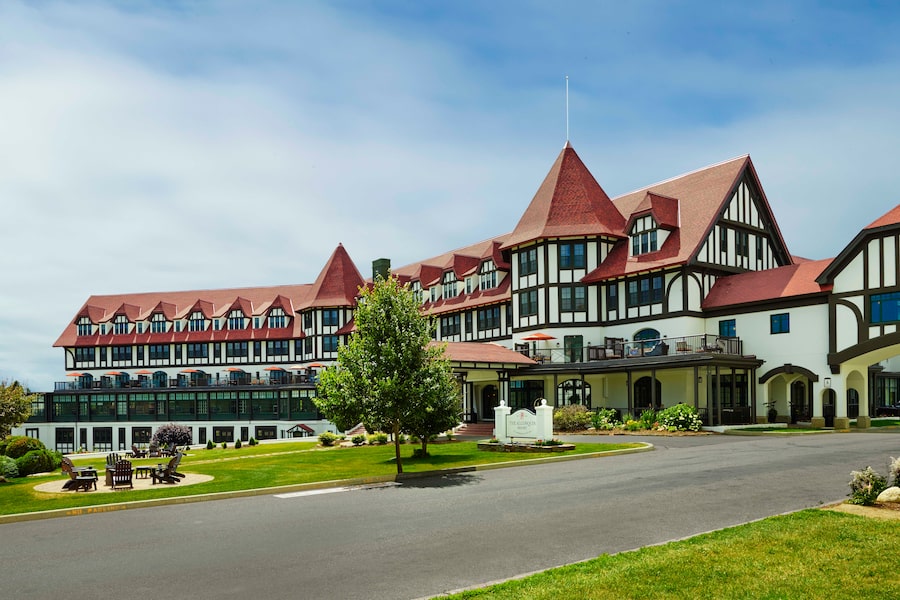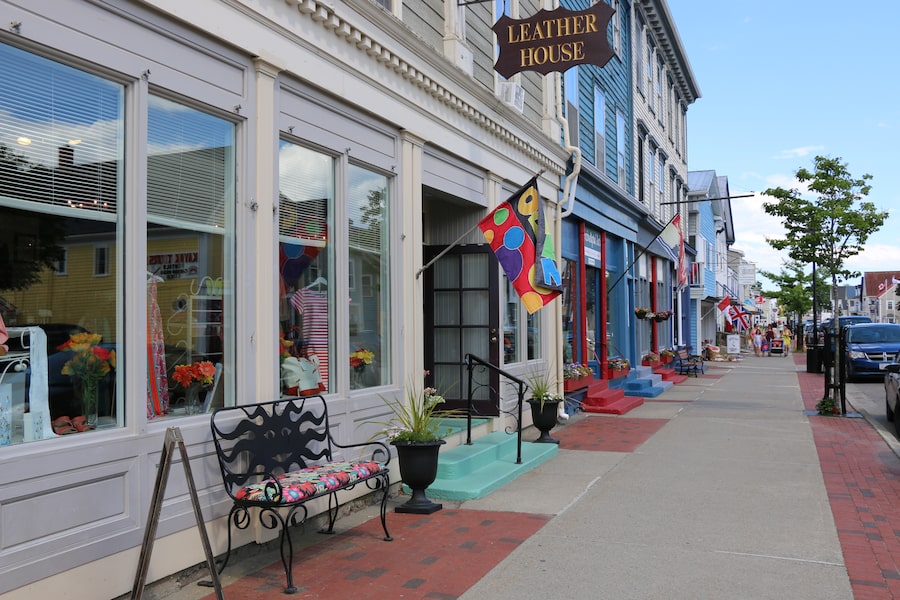
Algonquin Golf Course in St. Andrews by-the-Sea, N.B., has undergone a renovation under the guidance of Rod Whitman, shown at the course in July of 2017 during construction. He's the Canadian architect whose best-known work is another East Coast masterpiece, Cabot Links in Inverness, N.S.Jeff Brooke/The Globe and Mail
When Canada’s provincial premiers visited St. Andrews by-the-Sea recently, they weren’t just conducting government business. They also made time for leisure. Seven of the 10 premiers spent a day in the idyllic seaside town playing golf at the Algonquin Resort Golf Course.
The premiers were among the first to play the historic course completely in its latest and most dramatic iteration. The grounds, where golf has been played since 1894, have undergone a major, two-year renovation under the direction of Canadian architect Rod Whitman.
Just as he did at his best-known design, Cabot Links in Inverness, N.S., Whitman has created an open and expansive golf course that takes full advantage of proximity to the ocean, in this case the waters of Passamaquoddy Bay. In his biggest changes, trees have been cleared on the property and holes have been rerouted (and invented in one case) to provide more unobstructed views of the water and to bring players ever closer to the shore. The bunkers have also been redone, and with their wispy fescue borders, have taken on more of a links look.
Whitman’s touch simply adds to this tradition of excellence. With the renovation, the course reasserts its stature as the best in New Brunswick. It also further elevates the reputation of Canada’s entire Maritimes region as one of the hottest golf destinations in North America, adding to what Cabot Links and its sister course, Cabot Cliffs, have done lately in an area that was already blessed with classics such as Highlands Links in Nova Scotia’s Cape Breton and modern gems in Prince Edward Island, including The Links at Crowbush Cove and Dundarave.
The Algonquin Golf Course was open during much of the reworking, using temporary tees and greens in some spots as needed, but only just recently have visitors experienced Whitman’s full vision. I visited last summer midway through the construction, arriving with an already positive preconceived notion. U.S. architect Donald Ross laid out the definitive early version of the course in the 1920s and Thomas McBroom, one of Canada’s top designers, reinvented it in 2000. These are the sorts of architects whose courses stand above the norm and stand the tests of time.

Passamaquoddy Bay is visible on every hole on the back nine at the Algonquin Golf Course. Even the holes not directly on the water have unobstructed views after the removal of trees and bushes.Jeff Brooke/The Globe and Mail
The Algonquin’s improvements are never more evident than in the first several holes of the back nine. The 10th hole is new, a par-three playing away from the clubhouse and directly toward the water (which appears dangerously close to the back of the infinity green, but is actually quite far off). “As you make the turn from the front nine, you start to really feel that it’s a seaside course,” said Charlie Martin, the course’s new director of golf.
The 10th is followed by a complete overhaul of the par-five 11th, whose fairway has been rerouted, lengthened and widened to create an epic feel. Its green also appears to be dangling on the edge of the bay.
The par-three 12th, which has always been the course’s signature hole, has been reangled and the green and its surrounding complex have been reshaped to make the green more receptive to tee shots. (Beware, however. It’s still entirely possible for misjudged shots to land in the bay, which spreads out beyond the green.)
Maybe the most stunning change is at the par-five 13th hole, whose tee boxes and fairway have been pushed toward the edge of the water. The hole ends at yet another green with the bay as a backdrop. (Sensing a trend here?) Now the entire length of the hole is snug to the shoreline, not unlike what you’d see on several holes at Cabot, for example, or even at iconic venues such as Pebble Beach in California. Every hole on the back nine has a water view, but this stretch of holes delivers the biggest visual splash.
Algonquin was no slouch before the renovation. It had appeared a few times in ScoreGolf magazine’s biennial ranking of Canada’s top 100 courses. But its owners were not content to maintain the status quo, especially after its nearby hotel and resort of the same name went through a $50-million upgrade a few years ago, bringing the grand 100-plus-year-old facility into the 21st century and up a few notches on the luxury ladder.
“Truthfully, we had taken the hotel past where the golf course was,” Jim Spatz, chairman and chief executive officer of Halifax-based co-owner Southwest Properties, said during my visit. (New Castle Hotels and Resorts of Shelton, Conn., is the other owner.)
In addition to the reworked holes and more open vistas, the course is now more user-friendly. In the traditions of Ross and links golf, in general, and in keeping with Whitman’s style, the greens and their surrounding complexes invite shots along the ground as much as those in the air.
Whitman and his design associate Keith Cutten say they want the golf course, which tops out at about 7,100 yards, to be easier for average players but still a strong test for better players.
There’s a chance Whitman will do some more tinkering with the course over the coming years, budgets and owners willing. But the dramatic work is done. He’s given the course back its “wow factor” and made it a true seaside course. He’s taken it into the future without abandoning its past.
The season at the Algonquin Golf Course runs through the end of October. Peak summer green fees are $125 a round and drop to $100 in October. Stay-and-play packages are available with the Algonquin Resort.
The writer was a guest of the Algonquin Resort. It did not review or approve this story.






